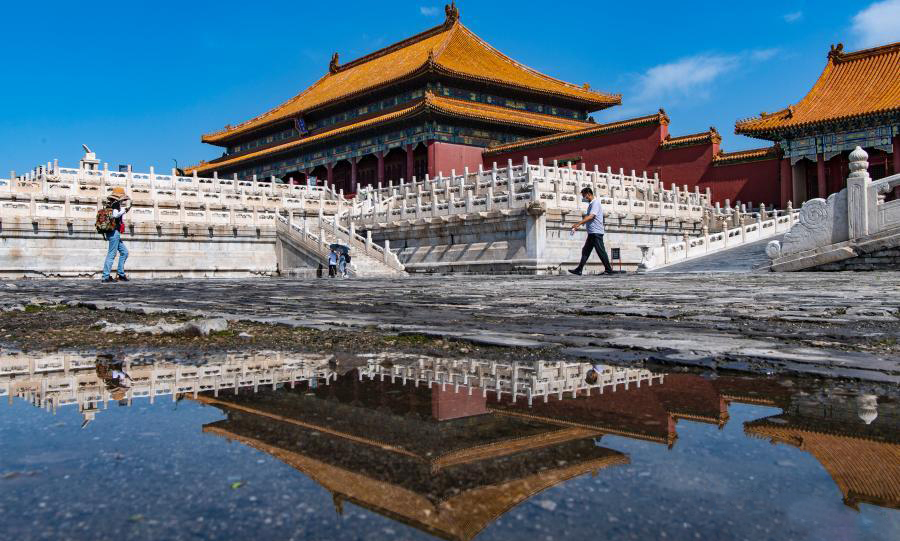Nascent carbon trading market awaits upgrading to boost liquidity
BEIJING, July 18 (Xinhua) -- While being the world's largest in terms of the amount of greenhouse gas emissions covered, China's nascent carbon trading market is in need of further exploration and upgrading to boost liquidity, and make trading more active and broad-covered as the country races to its dual carbon goals, analysts said.
Over a year since its debut on July 16, 2021, China's national carbon market has seen encouraging results. The market in the first year included 2,162 power-generating enterprises, covering about 4.5 billion tonnes of CO2 emissions.
Carbon trading, which allows buying and selling permits to emit carbon dioxide or other greenhouse gases, is regarded as one of the most critical tools to help reduce carbon footprints and meet emissions targets.
"Overall, the basic framework of the national carbon market has been initially established, and the role of promoting enterprises to reduce greenhouse gas emissions and accelerate green and low-carbon transformation has initially emerged," noted Li Gao, director-general of the Climate Change Adaptation Department under the Ministry of Ecology and Environment.
But for the system to play a larger role in the country's green goals, more efforts are needed to improve mechanism designs and boost market vitality, according to analysts.
While recognizing China's progress in building a national trading market, a report released by the China Council for International Cooperation on Environment and Development last September listed several problems in the current mechanism, including its weak connection with the overall climate targets, ill-defined property rights of carbon assets, and market entities' lack of vitality.
For the analysts interviewed by Shanghai Securities News, one of the biggest challenges for the carbon market development is its liquidity, as a lack of trading would result in limited incentives for enterprises to cut emissions.
Among the major constraints on market liquidity, China's carbon market is currently confined to the power-generating sector with limited investing activities. But changes are in the pipeline.
According to the overall plan of the Ministry of Ecology and Environment, from 2021 to 2025, the national carbon market will cover eight high-energy-consuming industries, including power generation, iron and steel, construction materials, non-ferrous metals, petrochemicals, chemicals, paper manufacturing and aviation, with a total of approximately 8,500 large emission-intensive enterprises.
On other fronts, Zhou Xiaoquan, president of the Shanghai United Assets and Equity Exchange, urged efforts to accelerate the establishment and improvement of the top-level system design to adapt to the country's dual carbon goals. He also encouraged establishing a legal and institutional system compatible with the carbon market.
As the carbon market is still in the early stage of development, it is difficult to compare the level of the carbon price and market trading activity with mature carbon markets abroad, according to Mei Dewen, general manager of the China Beijing Green Exchange.
"The most important thing at this stage is to clarify the basic rules and establish the basic framework to ensure the smooth operation of the market after a smooth start, which is currently in line with expectations," Mei said.
China has announced that it will strive to peak carbon dioxide emissions by 2030 and achieve carbon neutrality by 2060.
Photos
Related Stories
- World's largest carbon trading market mirrors China's green commitment
- Commentary: China never wavers in carbon commitment
- China steps up energy conservation, carbon reduction efforts in industrial production
- China cuts carbon emissions per unit of GDP by half from 2005
- China's five-year bioeconomy plan to focus on low-carbon growth, epidemic prevention
- Agricultural sector key to carbon goals
- More steps to enhance nation's carbon management system
- Flexibility key in assessing low-carbon transition
- China charts path to a green future
Copyright © 2022 People's Daily Online. All Rights Reserved.









